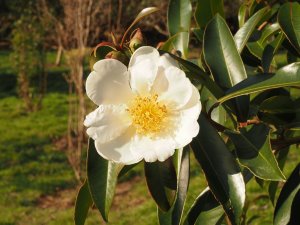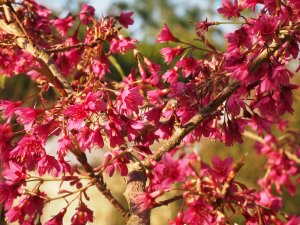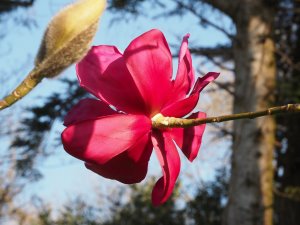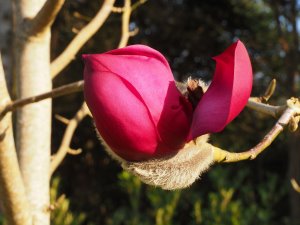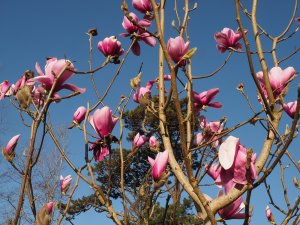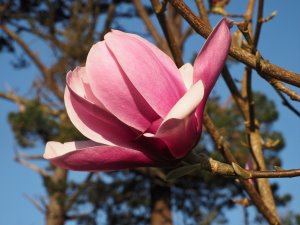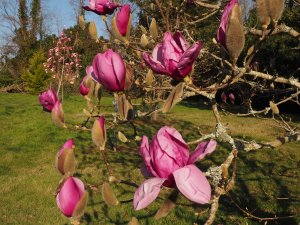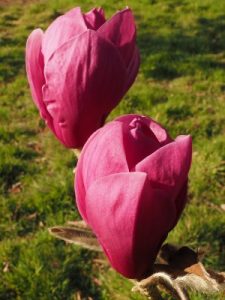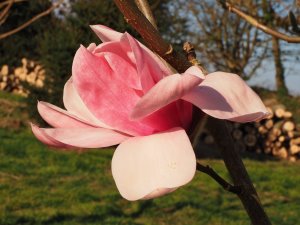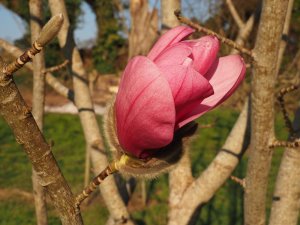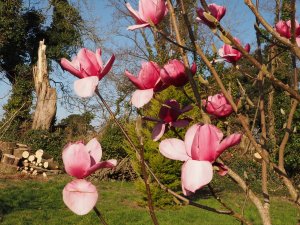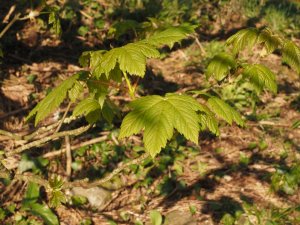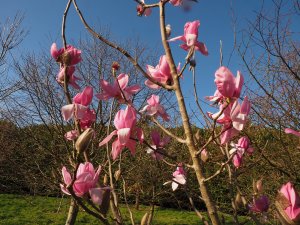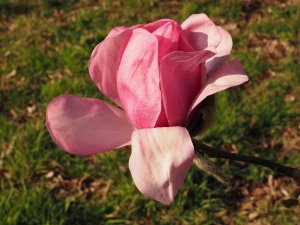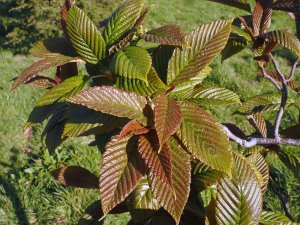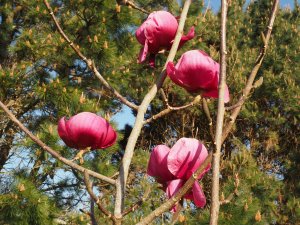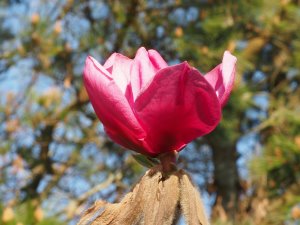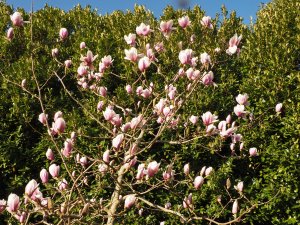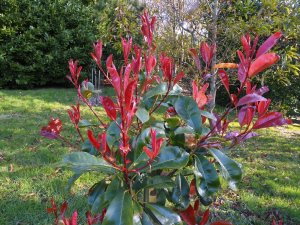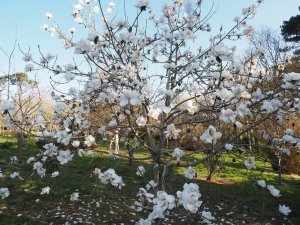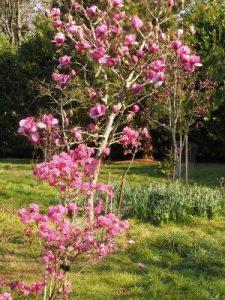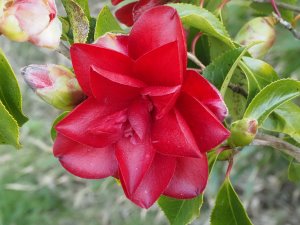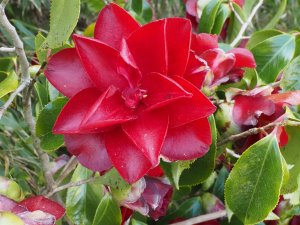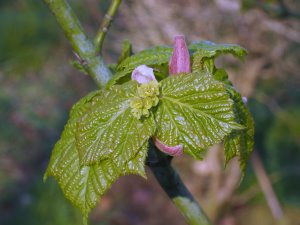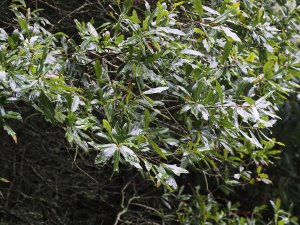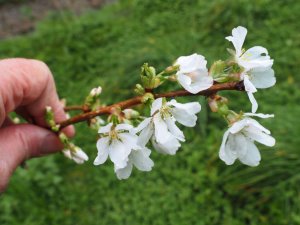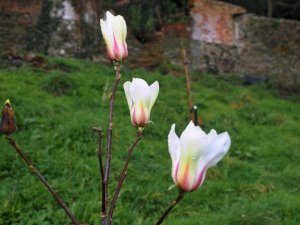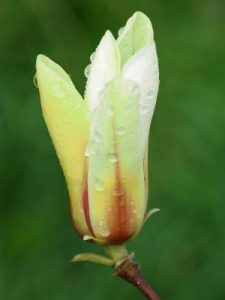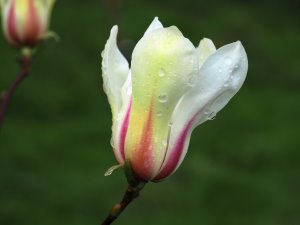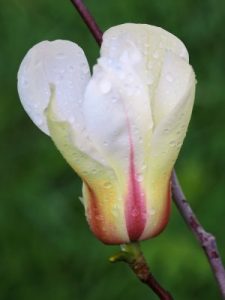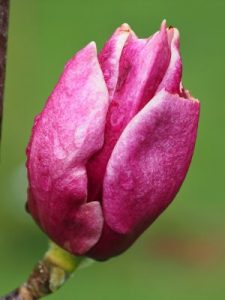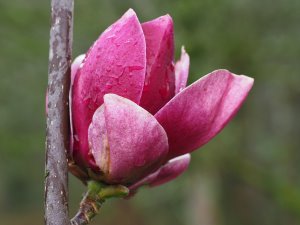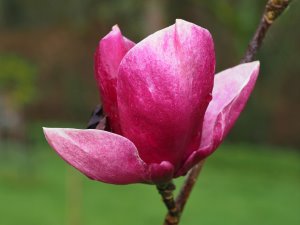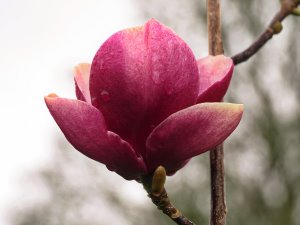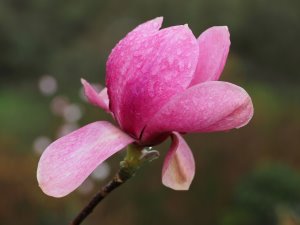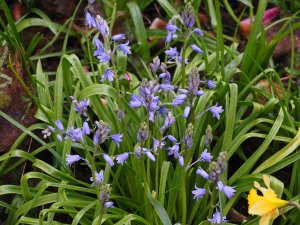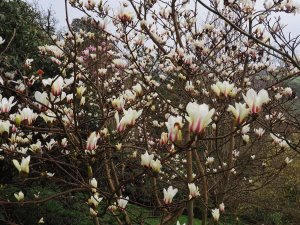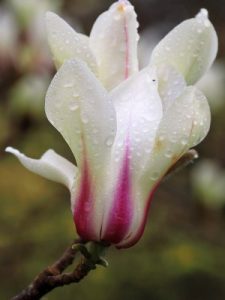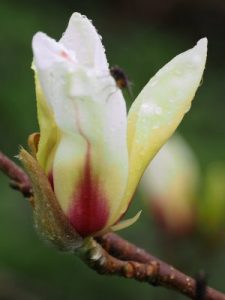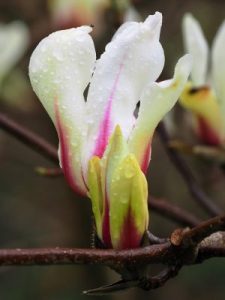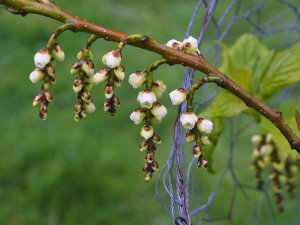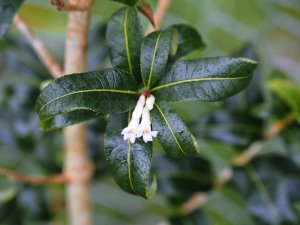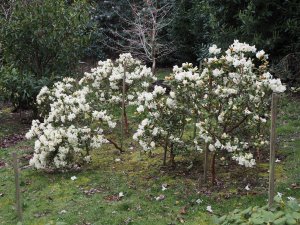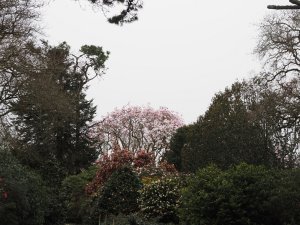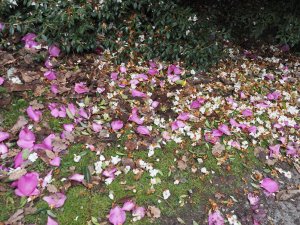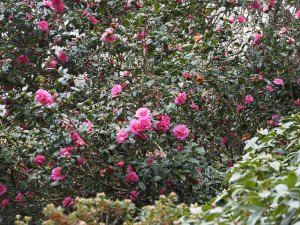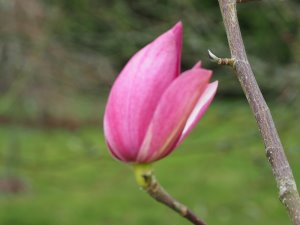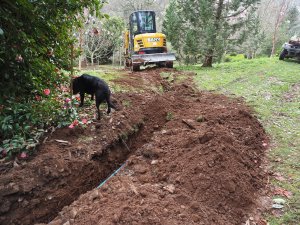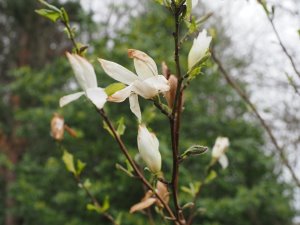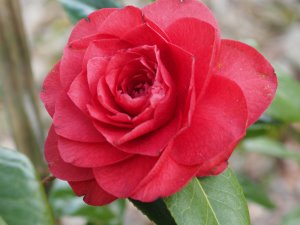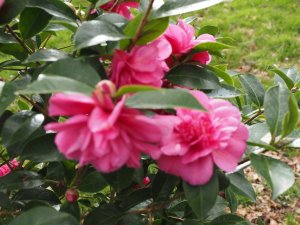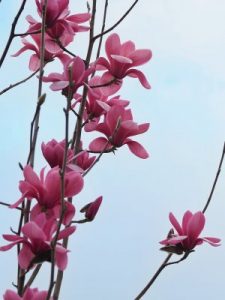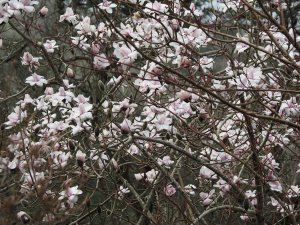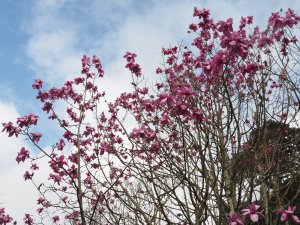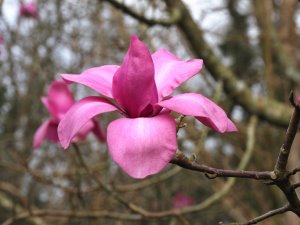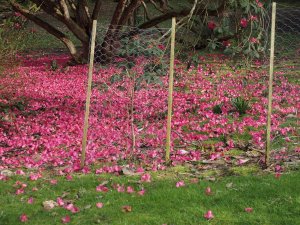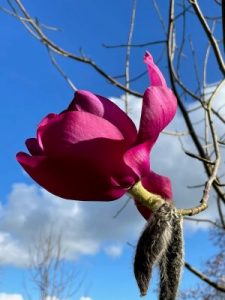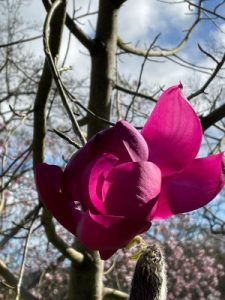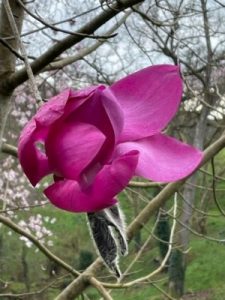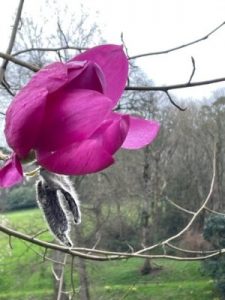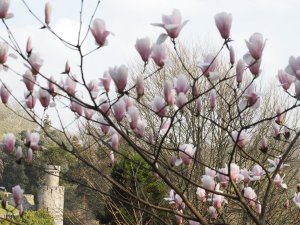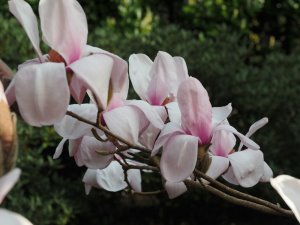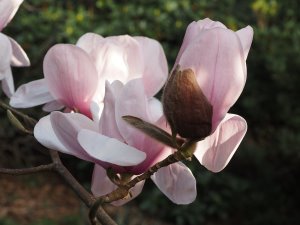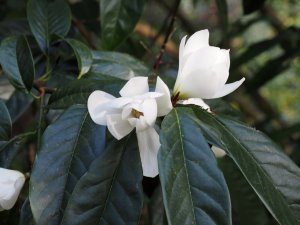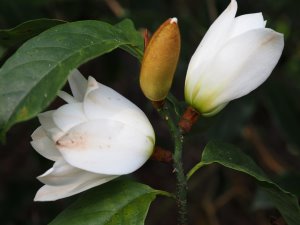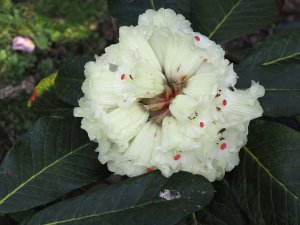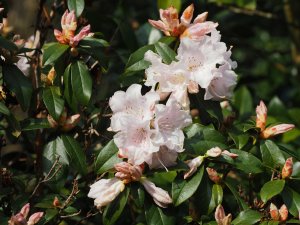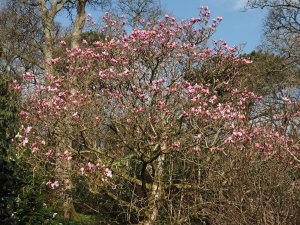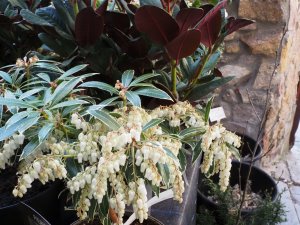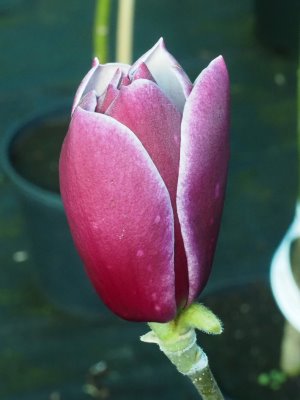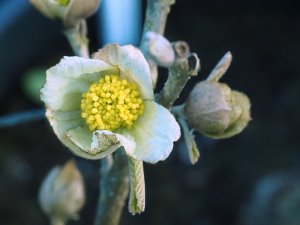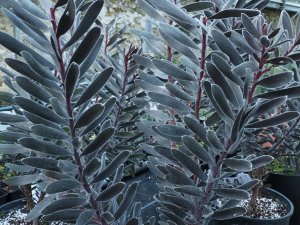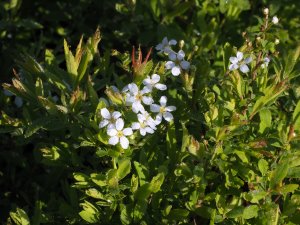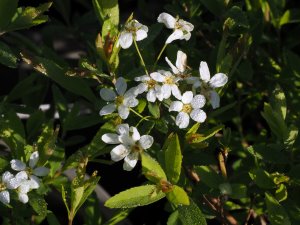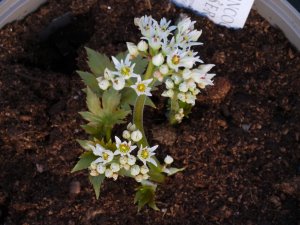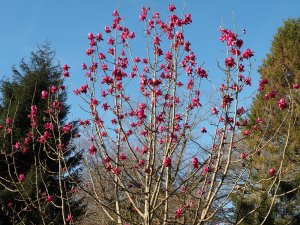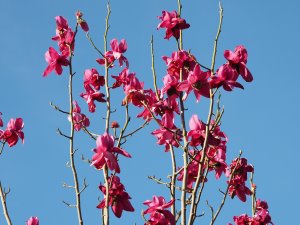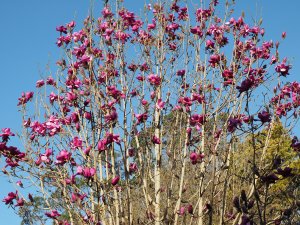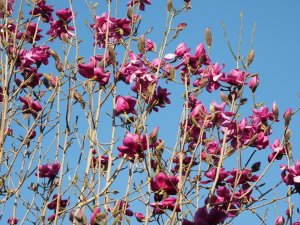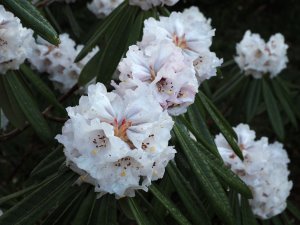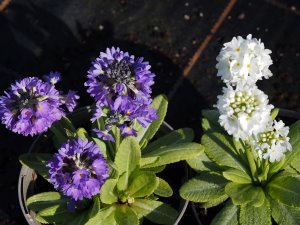2025 – CHW
Another glorious day.
Magnolia ‘Burgundy Star’ and Magnolia campbellii var. mollicomata.

The Polyspora above the greenhouse still has plenty of flowers.
Prunus campanulata ‘Felix Jury’.
Astonishing colour on Magnolia sprengeri ‘Marwood Spring’.
Magnolia ‘Pickard’s Ruby’ x M. ‘J. C. Williams’.
Magnolia ‘Purple Sensation’.
Magnolia ‘Cleopatra’ x M. ‘J. C. Williams’.
Magnolia sprengeri ‘Westonbirt’.
Magnolia ‘Star Wars’ x M. ‘Vulcan’.
First sycamore leaves that I have seen.
Magnolia cylindrica x M. campbellii ‘Darjeeling’.
Sorbus zahlbruckneri well into leaf.
Magnolia ‘Blood Moon’ x M. ‘Vulcan’.
Magnolia ‘Black Tulip’ x M. ‘Pickard’s Ruby’.



Magnolia ‘Rebecca’s Perfume’.
New growth on Photinia lasiogyna.
Magnolia ‘Sir Harold Hillier’.
Magnolia ‘Felix Jury’ and Rhododendron ‘Ostara’.
Camellia japonica ‘Black Magic’.
New leaf and flower on Acer ‘Valley Phantom’.
2024 – CHW
I may have seen a swallow in Caerhays Barton Yard but unable to verify in the rain.Why is this plant of Quercus phellos evergreen whereas the other two here are not? I guess because this isn’t Quercus phellos but actually Quercus myrsinifolia? (This is the oak just by the lower gate post at the entrance to White Styles).
I may have seen a swallow in Caerhays Barton Yard but unable to verify in the rain.Why is this plant of Quercus phellos evergreen whereas the other two here are not? I guess because this isn’t Quercus phellos but actually Quercus myrsinifolia? (This is the oak just by the lower gate post at the entrance to White Styles).
Prunus ‘Snow Showers’ has a wonderful weeping habit and is just getting going in Kitchen Garden. We still need to replace the two weeping willows that used to grow here.
Another newly planted Lunaplant import flowering for the first time. This is Magnolia ‘Green Diamond’. Not terribly green really even in bud and not so different from M. cylindrica ‘Lv Xing’ which was called M. ‘Sunrise’ originally here. I need to go and look at the mature plant at the top of Burns Bank and see if there really is a difference?
The equally new Magnolia ‘Miss Marble’ is now full out. Still small, immature flowers but the marbling is now evident. This is an excellent new variety.
A young Magnolia ‘Avalon’ with just one small flower as yet. Not exactly like the other 2 we have which are from the same cross and may or may not actually be ‘Avalon’.
Suddenly the Spanish bluebells are out. Saw nothing yesterday.
I can see no difference whatsoever between what we have always called Magnolia ‘Sunrise’ but now, apparently, correctly named as M. cylindrica ‘Lu Xing’. The Magnolia Society International Register now comes into its own. I discover that Magnolia ‘Green Diamond’ is another name for ‘Lu Xing’. The name ‘Sunrise’ was used against the wishes of the introducer and therefore is no longer a recognised name. Nor is ‘Green Diamond’ an accepted name either. Clearly we have just been sold a dud and taken in by a supposedly ‘new’ name!
Stachyurus macrocarpus (BSWJ 14678) flowering properly behind its deer protection. Roe deer seem to adore all species of Stachyurus.
Flowers on a young Osmanthus suavis.
Rehderodendron indochinense (BSWJ 12115) now flowering profusely well before the leaves appear. Buds in lower branches opening before those higher up.
2023 – CHW
The Cornwall Air Ambulance lunch here for 25 people (& garden tour) sponsored by St James’s Place.
The Cornwall Air Ambulance lunch here for 25 people (& garden tour) sponsored by St James’s Place.
Jaimie’s Rhododendron ‘Maisie’.
The view from Donkey Shoe back towards the Ririei Opening.
Fallen petals under Camellia ‘Cornish Snow’ and Magnolia ‘Lanarth’ (NZ form).
Camellia x willaimsii ‘Caerhays’ on Burns Bank.
M. cylindrica x M. campbelli ‘Darjeeling’ flowering for the first time.
Laying in the new water pipe (and tank) above the greenhouse to give us free water from our own spring below the church.
A new young Magnolia kobus ‘Isis’ battered by the wind. Is this really any different to M. kobus borealis?
Camellia x williamsii ‘Les Jury’.
Camellia reticulata ‘Fiesta Grande’ in its third year of flowering after planting.
Magnolia sprengeri ‘Westonbirt’ flowering properly here for the first time and a very dark colour.
Magnolia campbelli ‘Trelissick’ is not quite pure white.
The hybrid of ours on the drive which was made by PCT but we have lost the records. We can never decide if its good enough to name.
A carpet of fallen flowers under Rhododendron ‘Winter Intruder’.
2022 – CHW
A cold east wind is not doing the magnolias any favours for the impending visit of 31 RHS Fellows next week who are staying here for their tour of Cornish gardens.
Hot news from the propagation department and Cressy Knuckey. The Freylinia cuttings are growing roots after only 10 to 12 days in the hydroponic propagator.
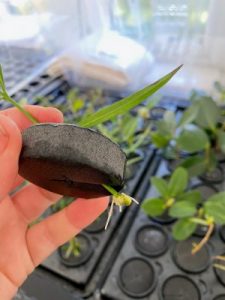
Here are four of Jaimie’s pictures of the first flowers on his new magnolia cross which we hope to register and name next year as Magnolia ‘Leonora’ after my aunt whose 80th birthday it was when it first flowered.
Magnolia x veitchii grown from seed from Chollipo Arboretum in Korea above the Green Gate is already making a major show.
Rhododendron arboreum ‘Tony Shilling’ in the Rookery.
Magnolia ‘Chyverton Pegasus’ very splendid in the sun.
Two of the three Michelia doltsopa seedlings above the camellia foliage plantation are flowering well but with very different sized flowers and leaves. Michelia doltsopa ‘Silver Cloud’ has clearly crossed up with the first one but not the second.
A good Rhododendron macabeanum seedling below Rookery Gate Path.
Rhododendron ciliicalyx just out.
Magnolia ‘Star Wars’ at its best.
2021 – CHW
A quick trip to Burncoose to get quotes from tree surgeons for work at The Copper House.
Pieris japonica ‘Flaming Silver’ alongside Rhododendron ‘Wine and Roses’ at the cash point.
A flower just coming out on Magnolia ‘Venus’ in a tunnel.
Parriotopsis jacquemontiana in flower – such as it is.
A new variety for us – Leucodendron ‘Burgundy Sunset’ with its very dark foliage.
One always thinks of spiraeas as summer flowering but Spiraea thunbergii is just coming out now.
Mukdenia rossii ‘Karasuba’ just into flower which I had not seen before.
A magnificent Magnolia campbellii ‘Darjeeling’ at the garden entrance from the nursery.
And alongside it an equally fine Magnolia ‘JC Williams’.
A well grown young Rhododendron calophytum on the opposite side of the drive. About eight years from planting out here.
Purple and white forms of Primula denticulata side by side.
Mike Chegwidden clearing the base for a new additional water tank above the borehole with a mini digger.




